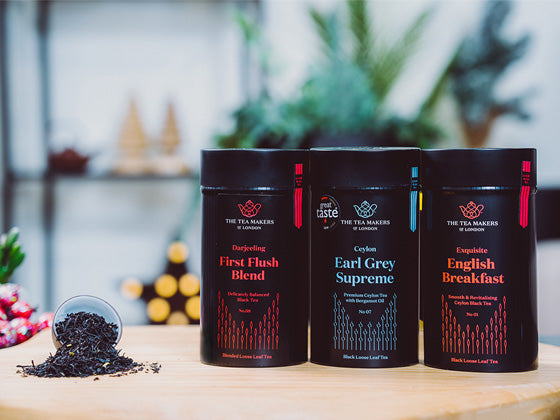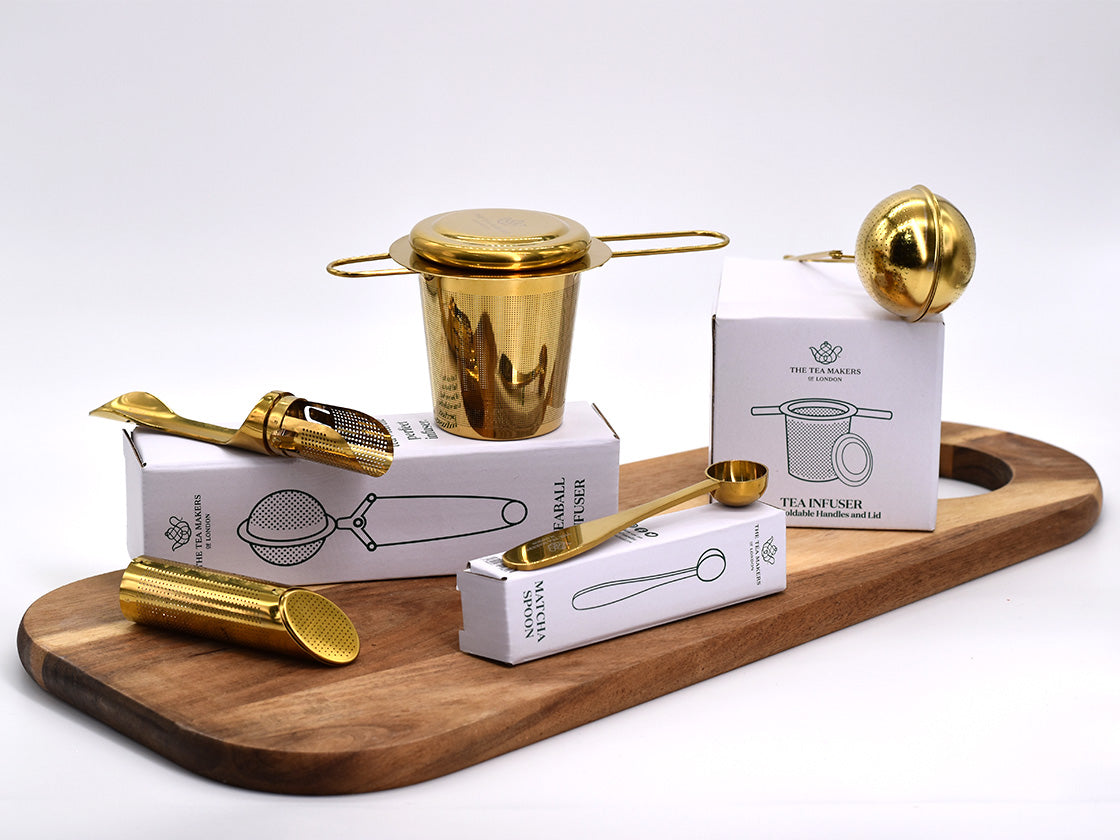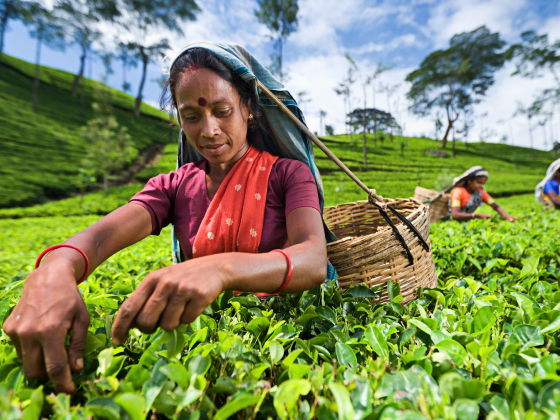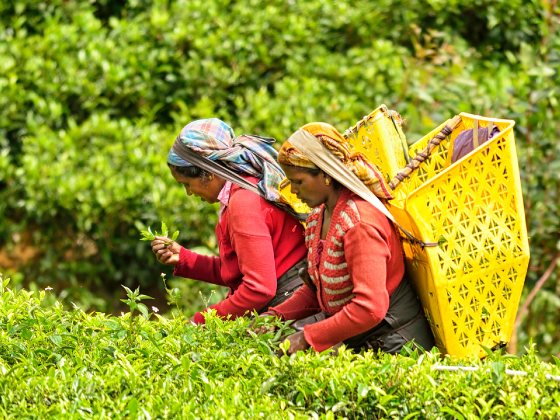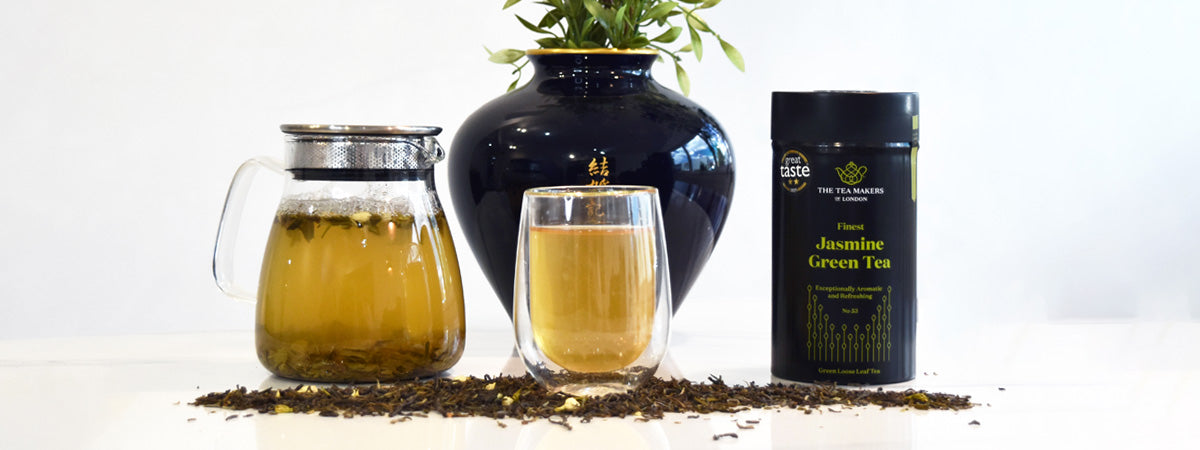What is Pu erh Tea?
Pu erh is a post-fermented, aged tea that stems from the Yunnan province of China.
The Chinese have been consuming Pu erh tea since the 7th Century. In the West, however, it remains a specialist beverage which is enjoyed by a small group of knowledgeable tea-lovers and tea connoisseurs.
The name ‘Pu erh’ stems from its place of origin - the Pu’er City of Yunnan, China - and has a number of different variations. Pu erh is also referred to as ‘Pu-erh’, ‘Pu er’, ‘Puer’, ‘Pu-er’ or ‘Pu’er’. Pu’er City is located in the south of the Yunnan region.
Mountainous terrain dominates the area, with elevations ranging from 376m to 3,306m. The city has a warm and humid subtropical climate which creates good conditions for growing tea.
Producing and exporting Pu erh tea is an important source of income for the city and the larger area in Yunnan. Pu erh production is highly regulated to ensure high-quality and authenticity. Only aged teas from the Yunnan province of China can be classified as a Pu erh tea.
Like fine wines, Pu erh teas become better with age. Unlike many food that spoils and decomposes over time, Pu erh simply develops a deeper and more complex flavour. In the case of this exquisite tea, letting nature take its course is the best option. Some people even think of enjoying Pu as drinking a part of history. The oldest Pu erh teas are sought-after collectables that sell for as much as £800-1,000 a gram.
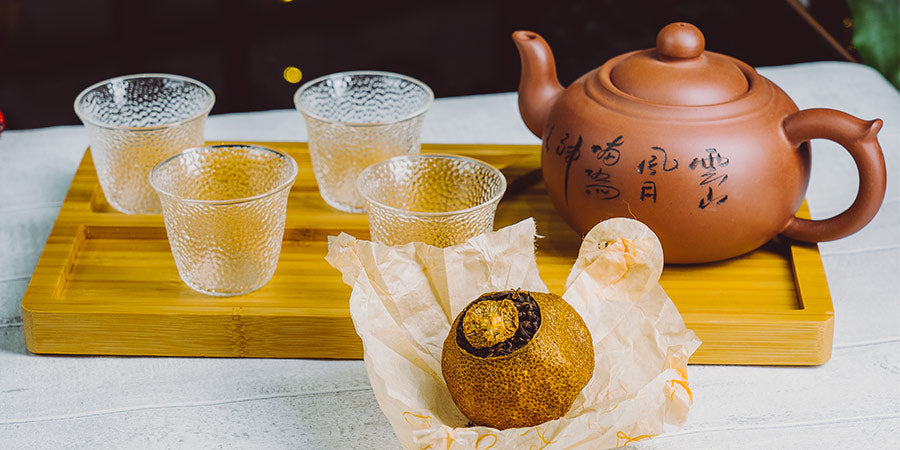
How is Pu erh Tea Made?
Growing Pu erh Tea
For a tea to be classified as ‘Pu erh’, it must be made from the large-leaf Assamica variety of the Camellia Sinensis tea plant and must be grown in the Yunnan province of China. The tea plants from this region, have large, soft leaves, that are spaced far apart on tough stems.
Pu erh is one of a small number of teas protected by a region-specific classification by the Chinese government. While this restricts the character and terroir of the tea, the true characteristics of Pu erh, stems from the process that happens after harvesting.
Harvesting Pu erh Tea
Pu erh teas vary from estate to estate. Each tea farmer uses a different and unique leaf. Some use an abundance of tips and some use silver leaves which grow wild on hillsides in the Yunnan region. The unique Pu erh teas, which are made from large, wild-growing leaves, are exceptionally highly prized.
Processing Pu erh Tea
After harvesting, the leaves are heat treated. The timing of this process is incredibly precise. The leaves must be exposed to heat long enough to halt oxidation, but not so long that it reduces all moisture and kills the natural bacteria, which are essential to the fermentation and aging process. The tea leaves also go through a process of withering, oxidation, rolling and sun drying.
When dealing with other types of tea, farmers usually sell the dried leaves directly to wholesalers and merchants. With Pu erh, however, farmers sell the dried loose leaf tea - known as ‘maocha’ - to processors who compress them into various shapes. Harvested and dried leaves are sent to Pu’er City, where each manufacturer blends the leaves, per individual, unique and time-honoured recipes, and continues the production process.
Compressing and aging Pu erh Tea
Pu erh was originally compressed into shapes to make it easier to transport. In modern times, however, Pu erh processors compress tea to create a more stable and portable aging environment. The compression shapes vary. The most common shapes are brick, cake, log, bell, mushroom and little nests, which are referred to as ‘Tuocha’ or ‘Mini Cakes’.
After compression, Pu erh tea is stored in cellars under unique temperature and moisture conditions, which create subtle chemical processes that further mature and mellow the tea over time. You can drink Pu erh tea after three months aging. It takes years, however, before the tea starts to develop that unique, aged Pu erh flavour.
A new process: the difference between Sheng and Shou Pu erh tea
During the past 50 years, the demand for Pu erh tea has grown as a result of rising interest from the West. Therefore, the Chinese have invented a very clever method to hasten the process of producing Pu erh.
Earlier, we mentioned that there are two main varieties of Pu erh, ‘Sheng’ and ‘Shou’. Sheng - commonly referred to as ‘Raw Pu erh’ - is the original variety of Pu erh which requires years of aging to develop depth, complexity and smoothness of flavour. Shou - also known as ‘Cooked Pu erh’ - is a relatively modern variety of Pu erh tea which dates back to the late-mid 1900s.
To avoid waiting years for the tea to develop its distinctive flavour profile - which is a result of post-fermentation - the Chinese have added an extra, very simple step to the production process: before compression, they lay out the tea leaves in piles and leave them for several months.
This creates a microbial fermentation which produces heat - hence the term ‘cooking’. By letting nature take its course, complex flavours develop much faster than during the traditional Pu erh production method. Some say that Cooked Pu erh is of a lesser quality than the Raw variety, but a well-made Shou can be just as pleasurable as a Sheng Pu erh that has been aged for years.
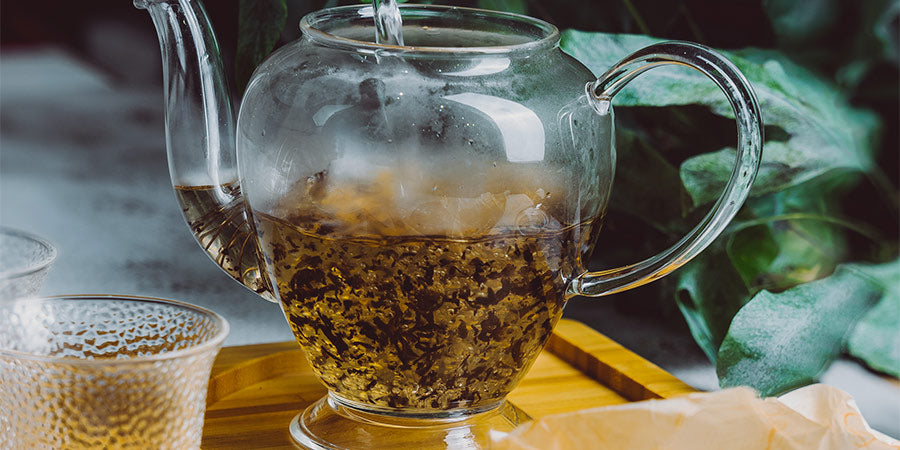
The History of Pu erh Tea
Dark teas have a longstanding history that dates back over 1000 years. Originally, dark, compressed teas were produced for people living in the remote areas of China’s borders. Transporting tea to these areas meant long and complex travels across the country on horseback or camels. To make it easier to carry, merchants would compress tea into slabs, bricks and logs. By applying these methods, the tea would take up less space and would be less likely to go bad during the journey.
Long-term exposure to moisture from rain and sweat during transport also resulted in a natural post-fermentation. This generated a microbial development which improved the flavour and reported health benefits of the tea.
So, transporting tea to rural areas of China almost accidentally prompted the development of Pu erh. The aging and post-fermentation process that happened during travel created a tea which was said to aid digestion and provide important nutrients (which otherwise weren’t available in most diets at the time). Pu erh was also very affordable, which added to its growth in popularity across the Chinese nation.
Types of Pu erh Tea
Pu erh belongs to a category of teas we in the West call ‘Dark Teas’.
In China, these are known as ‘Black Teas’ as western ‘Black Teas’ are known as ‘Red Tea’ in China. Confusingly, dark teas are also called ‘Aged Teas’ or ‘Post-fermented Teas’.
The Pu erh family, is the most famous of dark teas. There are two main categories of Pu erh: ‘Sheng’ and ‘Shou’.
Raw Pu erh Tea
Sheng is also referred to as ‘Green’, ‘Raw’ or ‘Un-cooked’ Pu erh and can be further divided into the categories ‘Young’ and ‘Aged’ - referring to the amount of time the tea has been aged. Aged Sheng is viewed as the highest quality of Pu erh teas. Find out more by checking out our Raw Pu-erh cakes.
Ripened Pu erh Tea
Shou is also known as ‘Black’, ‘Cooked’, ‘Ripe’ or ‘Ripened’ Pu erh. Shou goes through an extra processing step known as ‘cooking’, which hastens the aging process. Find out more by checking out our Ripened Pu-erh cakes.
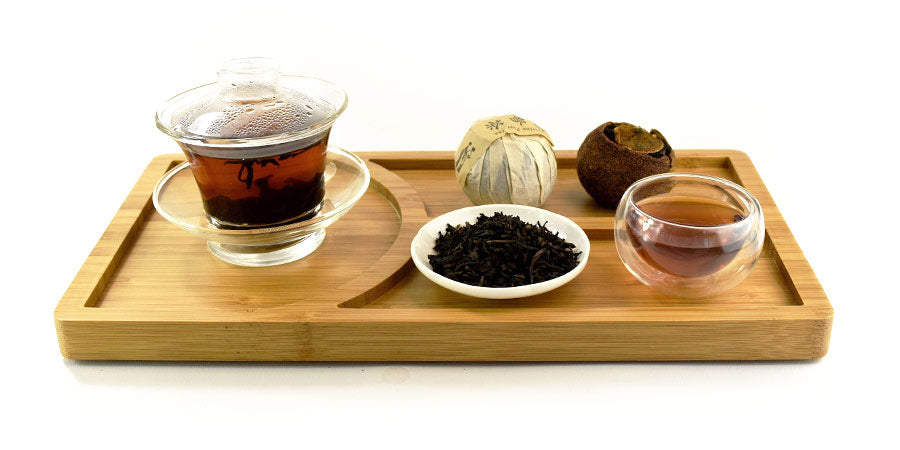
Does Pu erh Tea Contain Caffeine?
As a dark tea, depending on the strength of the brew, each cup of Pu erh tea can contain between 30 and 100mg of caffeine per cup. On average a cup of coffee has between 100-140mg of caffeine so it still packs a punch, but without the jittery side effects.
How much Pu erh Tea should I drink?
The amount of tea you consume per day is complete personal preference, however we recommend starting out with 1-2 cups per day and working your way up from there to avoid any side effects.
What does pu-erh tea taste like?
Pu erh tea imparts a rich, smooth and earthy taste with complex overtones ranging from plum to chocolate.
5 benefits of Pu erh Tea
Weight Loss
As Pu erh is a fermented tea, it can produce healthy probiotics and beneficial gut bacteria into your body which can improve your blood sugar control, playing a major part in weight management and hunger. Learn more about our weight loss and metabolism teas.
Boosting Energy
Being a dark tea, each cup has between 30-100mg of caffeine per cup, it is often consumed in the morning or early afternoon to boost energy levels. Learn more about our focus and energy teas.
Promoting a healthy heart
Pu erh tea may help reduce cholesterol levels by decreasing fat accumulation which can decrease the risk of heart disease.
Preventing Illness
The fermentation process of Pu erh tea results in high amounts of antioxidants which can help protect against development of chronic diseases. Learn more about our teas for the immune system.
Reducing Stress
Despite containing caffeine, Pu erh tea has been shown to increase the production of natural melatonin in the brain, which can result in decreased stress levels and improved sleep patterns. Learn more about our teas for sleep and relaxation.
How to Brew Pu erh Tea
The taste and nature of Pu erh tea is always evolving; no two cups of Pu erh tea will taste exactly the same. There are two acknowledged methods for brewing Pu erh - the modern Western way and the traditional Chinese way.
The Western way is less complicated, whereas the Chinese way produces a more authentic flavour and overall experience. The most essential tools for brewing Pu erh are a Gaiwan and a Pu erh prying pick - needed only for compressed Pu erh teas, of course. For more information on how to brew Pu erh, please see our comprehensive Pu erh brewing guide.
How to store Pu erh Tea
It is best to store Pu erh teas in a cool, dry place, away from temperature fluctuations and odours. For example, we would not recommend storing your Pu erh teas in the kitchen, as they can be exposed to odours from cooking. A cupboard in a spare-room or pantry is a good suggestion. For optimum preservation, we recommend you store Pu erh tea in a sealed cardboard box. If you intend to drink the tea within five years, we suggest using a Pu erh prying pick to break the cake up into small pieces. This will leave more surface of the tea exposed to air, allowing for further oxidation and developing the flavour complexity. This process is referred to as ‘waking up the tea’.

While Pu erh remains a speciality amongst Western tea-drinkers, its rich history, unusual aesthetic and appealing flavour means it’s growing in popularity in the West. Who knows, Pu erh may even follow in the footsteps of its Japanese cousin ‘Matcha’ and become a mega foodie trend. For now, we welcome you into the metaphorical exclusive club of Pu erh drinkers.
